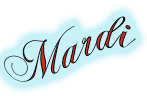Positive:
**Easy to prepare.
**Cut patterns right side up. Easy.
**Fuses down nicely ("Glossy" version), although a couple of sharp points have worked loose, but only the tips.
**Edges don't fray.
**Does not gum up the sewing machine needle.
Negative:
**Have to let it dry for an hour after painting the Modpodge on the fabric.
**Using "Glossy" the fabric is definitely stiffer than traditional fusing material.
**It is tough to sew through. My machine does it just fine, but using a needle to bury the
threads dug a hole in my finger. The stitching doesn't bury itself down into the batting as much as I would like.
**Because of the stiffness I don't think the quilting has as much puff as it normally would. However, I am using a low-loft batting so I am guessing.
My vote is in. I mostly don't like the heavy stiffness because it prevents the fabric from flowing under the quilting needle - sort of like pushing card stock and trying quilt it. Using the "Fabric" variety of Modpodge probably doesn't make it so stiff, but it also doesn't iron down securely. I won't be using this as a regular part of my sewing. Anyone want some Modpodge?
 |
| No way to capture the stiffness in a photo, but I was still able to quilt it. |
TIP: Don't let a fail stop you from trying new things. You never know until you try if a new process fits you.
I wonder what would happen if I diluted the Modpodge a little. Time for some scientific experimentation. Later!
I have used Softfuse for several years and like it better than anything else. You can purchase it on Amazon. One of my local quilt stores carries it, but it is generally harder to find than some other brands. It comes with paper on only one side so patterns have to be reversed if you draw them on the paper side, but I have a work-around for that.
How do I manage a work-around for the pattern? I iron fusible to the back of a reasonable amount fabric before cutting pieces. Set the prepared fabric on a pressing sheet (silicone or teflon) right side up, fusible down. Then iron the freezer paper pattern to the right side of the fabric, cut it out and pull the pattern off (like I did with Modpodge). The fabric lifts right off the pressing sheet, fusible still on the back. I try to gauge how much fabric to prepare so I don't have a lot of extra fabric with fusible on it. You can always fix some more and it doesn't have to dry like Modpodge.
Idea!!!
I wrote the above two days ago, but this morning while walking my dog in the fog I had a brilliant idea. It is not really new, but I just adapted it to Modpodge. One thing I really like about the Modpodge technique is the non-fraying edges. So here is my idea. Cut loosely around the pattern leaving about 1/8 inch beyond the edges. Then paint only the outer edges with the Modpodge. Let it dry then cut the details of the pattern. It will keep the edges from fraying. It will iron to the background fabric. It will still be soft in the middle. You won't have useless, stiff, leftover fabric scraps. You could still use some fusible in the center if it is a large piece. Worth a try, don't you think?
Sew some happy seams this week! I wish you a bunch of new ideas to think about.











